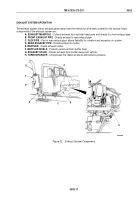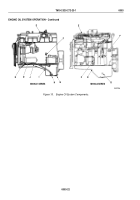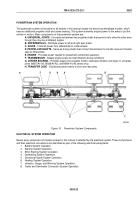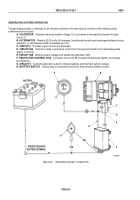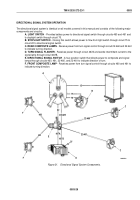TM-9-2320-272-23-1 - Page 229 of 1313
ELECTRICAL TERMS AND DEFINITIONS
The following electrical terms and definitions will be frequently referred to throughout this section and should be
understood before proceeding:
Alternating Current (AC signal)
- Current in a circuit that flows in one direction first, then in the other direction.
Circuit
- A complete path for electric current flow between components.
Circuit Breaker
- An automatic switch that interrupts current flow in a circuit when the current limit is exceeded.
Direct Current (DC signal)
- Current in a circuit that flows in one direction.
Female Connector
- One-half of a connector which fits over the other half.
Ground
- A common return to complete a path for current flow in a circuit.
Harness
- A group of wires connected between devices that are bundled and routed together to prevent damage
and make repair and replacement easier.
Male Connector
- One-half of a connector which fits the other half.
Polarity
- The direction current flows in a circuit (usually positive to negative).
Relay
- An electromagnetic device that operates like an automatic switch to control flow of current in the same or
different circuit.
Reverse Polarity
- The condition that exists when circuit polarity is connected opposite of that which was intended.
Sending Unit
- A device that produces an electrical signal and sends this signal to the device which will make use
of it.
Sensor
- An electrical sensor takes a physical condition (temperature, oil presence or absence) and converts it into
an electrical signal.
Splice
- A permanent physical connection of two or more wires.
Terminal
- Fastener at end of wire used to connect the wire to an electrically-powered device.
BATTERY SYSTEM OPERATION
The battery system is identical for all models covered in this manual and consists of the following major components
and circuits:
A. BATTERIES
- Four 6TN batteries are connected in series parallel to provide 24-volts DC for electrical
starter system and 12-volts DC for the heater fan low speed.
B. SLAVE RECEPTACLE
- Links an external power source directly to the slaved vehicle's batteries to assist
in cranking engine when batteries are not sufficiently charged.
C. CIRCUIT 7
- Provides a ground between starter, battery, and chassis.
D. PROTECTIVE CONTROL BOX
- Protects the vehicle electrical system in the event battery system
polarity is reversed. Connects battery power to vehicle electrical lead through circuit 81 and circuit 5.
Connects positive ground through circuit 94 to the starter.
E. BATTERY SWITCH
- Controls a relay in protective control box through circuit 459 that connects batteries
to vehicle electrical load.
F. STARTER SOLENOID
- Junction point for battery positive lead (circuit 6) and vehicle electrical feed wire
(circuit 81).
G. CIRCUIT 6
- Connects batteries to starting motor and to protective control box through circuit 81.
TM 9-2320-272-23-1
0003
0003-24
Back to Top




